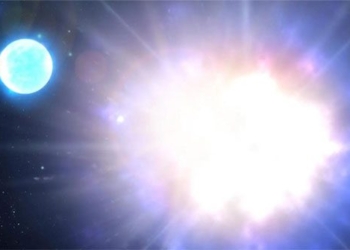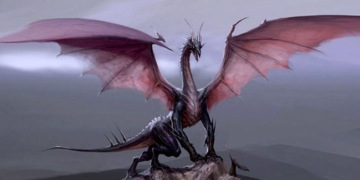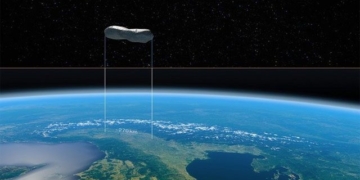Astronomers using the James Webb Space Telescope have discovered the oldest “dead” galaxy ever observed, just 700 million years after the Big Bang.
Researchers utilizing the James Webb Space Telescope (JWST) have identified the oldest “dead” galaxy ever seen – a cosmic corpse that has left scientists perplexed as it challenges our current understanding of the early universe.
The Mysterious Galaxy

An image from the James Webb Space Telescope showcasing JADES-GS-z7-01-QU, the oldest “dead” galaxy ever observed (Photo: JADES Collaboration)
This galaxy mysteriously stopped forming stars when the universe was only 700 million years old, while countless stars were forming elsewhere due to the abundant supply of primordial gas and dust.
The galaxy, named JADES-GS-z7-01-QU, is detailed in a paper published on March 6 in the journal Nature, providing astronomers with insights into the elusive foundations of galaxy evolution in the early universe, including why galaxies fail to form new stars and whether the forces driving their stellar explosions change over time.
The lead author of the study, Tobias Looser, a researcher at the Kavli Institute for Cosmology at the University of Cambridge, USA, stated: “Galaxies require a plentiful supply of gas to form new stars, and the early universe was like an all-you-can-eat buffet.”
Current models cannot explain why the newly discovered galaxy did not form stars in the less than one billion years following the Big Bang.
Co-author Francesco D’Eugenio commented: “It’s only later in the universe’s timeline that we begin to see galaxies stopping star formation. Other ‘dead’ galaxies found elsewhere seem to have paused star formation when the universe was about 3 billion years old.”
To explore JADES-GS-z7-01-QU, Looser and colleagues utilized the powerful infrared vision of JWST to peer through thick dust that obscured the earliest objects in the universe. In addition to being the oldest “dead” or “quenched” galaxy discovered to date, this newly discovered galaxy is also significantly lighter than other inactive galaxies previously found in the early universe.
JWST data indicates that this galaxy was actively forming stars roughly 30 to 90 million years before it quickly shut down, although the exact cause of this cessation remains unknown.
Astronomers are aware that various factors can slow down or extinguish star formation. For instance, internal disturbances within a galaxy, such as radiation emitted from a supermassive black hole, could push gas out of the galaxy and deplete the resources it relies on for star formation. Another intriguing possibility is that the environment surrounding the galaxy at that time did not provide sufficient gas to replenish what the newly formed stars were consuming, leading to a shortage of star-forming material.
Another plausible explanation for the dormancy of the new galaxy could be that early galaxies “died” and then revived later.





















































